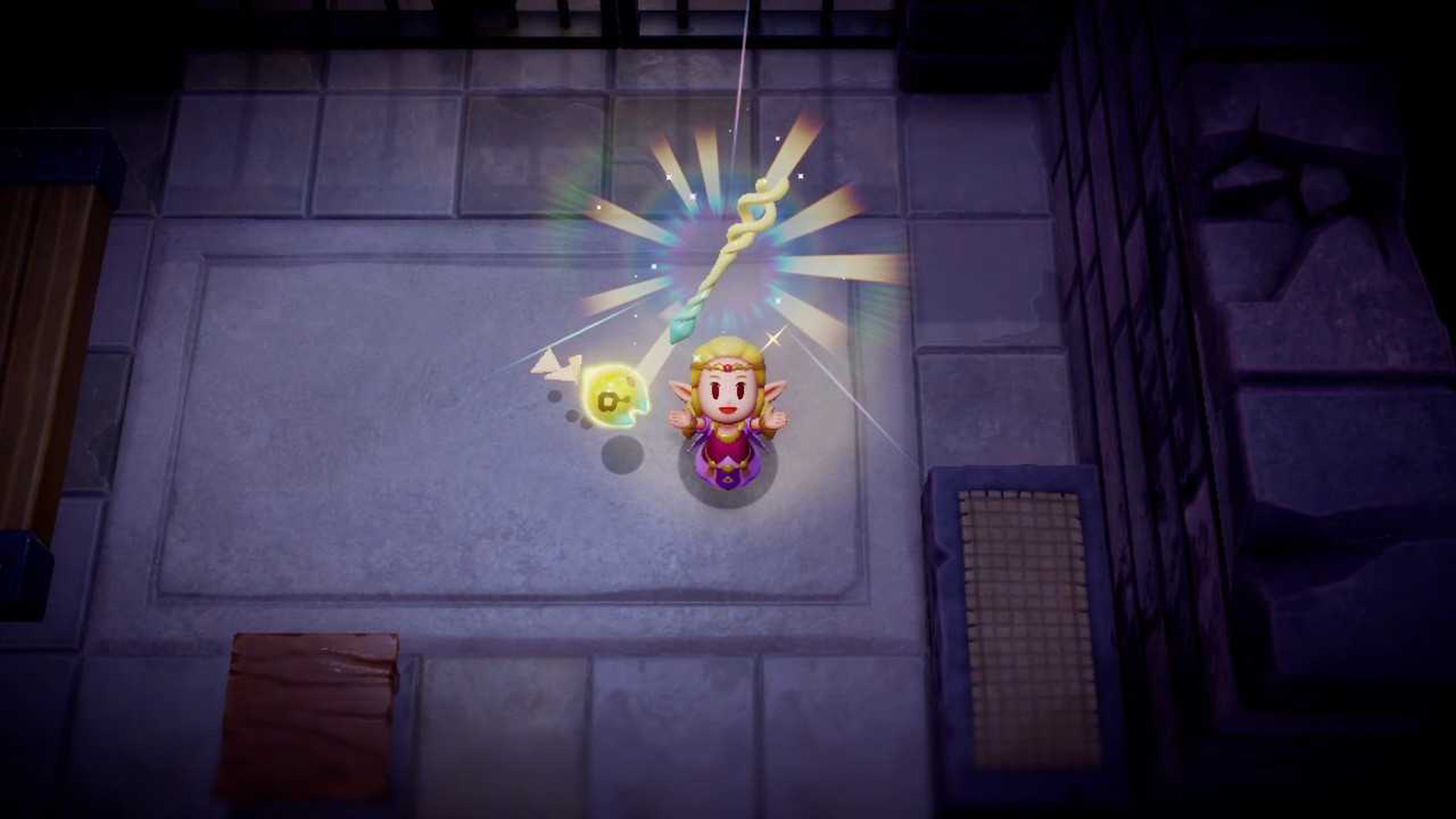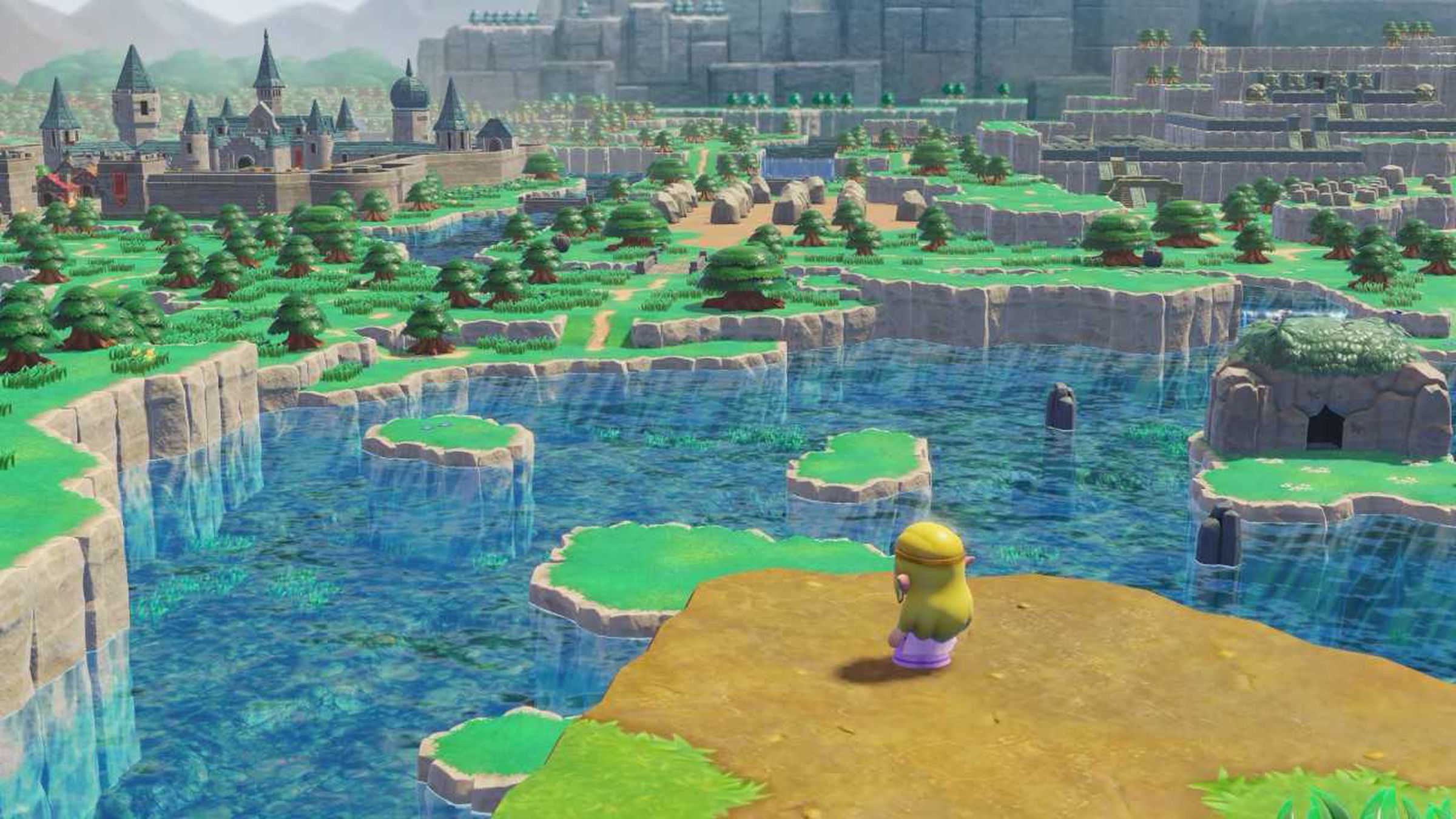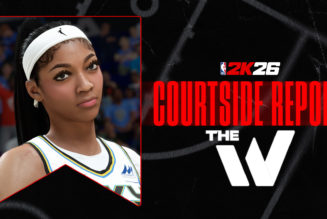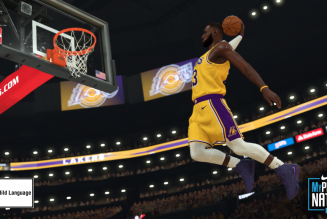Zelda’s first solo adventure plays to her strengths, but even in her own game, she feels underutilized.
The Legend of Zelda: Echoes of Wisdom, launching September 26th, is Princess Zelda’s first standalone adventure. Her debut solo outing does an excellent job of establishing Zelda as a protagonist that’s unique and separate from that green guy. But the game’s sparse environments, formulaic dungeons, and simplistic platforming and puzzles ultimately swallow her up, making Zelda feel underutilized, even in her own game.
In Echoes of Wisdom, giant rifts have opened up all over Hyrule, trapping everything and everyone in a void of stillness while spitting out evil versions of the people the rifts have consumed. With the help of an adorable creature named Tri, Zelda must use the copying power of the Tri Rod to rescue her allies, defeat the evil clones, and stop the rifts from swallowing Hyrule whole.


Before Echoes of Wisdom, every opportunity we’ve had to play as Zelda has been in spinoffs, with gameplay designed to fit whatever alternate universe she’s in rather than her own personality. She’s a typical sword and board protagonist in her two Philips CD-i games. She busts out elegant fencing in Hyrule Warriors and uses the myriad powers of the Sheikah Slate to fight in Age of Calamity. And of course, she’s got a pair of lethal hands rated E for Everyone in Super Smash Bros.
But what makes the most sense for Zelda, in her original context as the Princess of Hyrule, when Link’s not around and there are dungeons to delve into and monsters to defeat?
Using her wits.
In Echoes of Wisdom, Zelda must figure out how to use echoes, or copies, of objects from throughout Hyrule to save the day. If there’s a wide gap to cross, Zelda can use the Tri Rod to build a bridge out of beds. When a pig-like Moblin is in her way, she can summon a bigger, meaner Moblin echo to fight it. Echoes of Wisdom is smart in that it allows Zelda to establish her own identity as a hero that feels authentic to her as a character. She doesn’t need brute force and utility belts worth of specialized tools, just her brain and fire zol or two. She’s distinct from Link but is as formidable a force as he is — scarier even. After all, who should Ganon worry about more? The guy who can kill him with a sword or the girl who can kill him with literally anything?
In the game’s first handful of hours, using echoes to solve puzzles and fight monsters was seriously fun, reminding me of the first hours of Breath of the Wild or Tears of the Kingdom. The vastness of Hyrule lay sprawled out before me filled with things to discover, and it was up to me to figure out how. Puzzles and platforming sequences have multiple solutions and routes depending on which echoes you’ve learned. Instead of stacking beds to cross a gap, I can use a flying tile. Or I could use Tri’s “reverse bind” ability to tether Zelda’s movement to another moving object.


But neither the possibilities nor the world were as vast as I initially thought. After a while, I realized there wasn’t much to do outside of the main quest. There were smaller rifts to clean up, which were minor dungeons all with the same objective: find three to five of Tri’s friends hidden behind monsters or complete simple platforming puzzles. Or there were a handful of side quests to complete, which were usually one-and-done objectives that involved either finding a thing or killing a thing. So many parts of Hyrule were just empty, populated only by the occasional monster or treasure chest. Eventually, I didn’t bother trying to explore anymore, choosing instead to fast-travel from place to place.
Though Echoes of Wisdom isn’t as large or as long as Breath of the Wild or Tears of the Kingdom, all three games operate on the basic premise of, “Here’s an open world and a bunch of abilities, figure it out.” What made Breath of the Wild and Tears of the Kingdom so fun was that both games presented so many different kinds of puzzle and platforming challenges that required out-of-the-box thinking to solve. Whereas in Echoes of Wisdom there are basically only two kinds of challenges: something’s too high or something’s too far. And in nearly every instance, those challenges can be solved with the same handful of echoes. I had so many of them, like a gnarly rolling log of spikes, that I never got the chance to use. The game never gave me a reason to.
You solve 90 percent of the game’s platforming challenges with beds and trampolines.
Combat was far better at incentivizing creativity than platforming. Each enemy has different movement and attack patterns, requiring the careful selection of the right monster or item to counter it. The snake-like rope monsters are fast, low to the ground, and hard to see when camouflaged in their grassy habitat, making them impossible to hit with melee attacking monsters. After I wasted too much time hoping my bird echo would pluck it off the ground, I discovered a much simpler solution: light everything on fire with a torch. And when I couldn’t find the right monster for the job, Zelda can use Link’s sword, arrows, or bombs for a limited amount of time.
I think that the singular ability to use Link’s sword gets at the heart of what’s ultimately disappointing about Echoes of Wisdom: all of Zelda’s wits don’t really amount to much. Sure I had dozens of echoes at my disposal, but halfway through the game, they only got in my way as I scrolled past them to get to the same five echoes I knew would get the job done. Combat was better, but whenever I wanted, I could thwart a difficult foe by simply stabbing it to death. That’s not to say Echoes of Wisdom wasn’t fun. I wouldn’t have taken the time to clear every optional dungeon or most of the side quests if I hadn’t been enjoying myself.
But after 35 years of lending her name to the iconic franchise, I wanted Zelda’s first game to be a little bit more worthy of her intelligence and strength.
The Legend of Zelda: Echoes of Wisdom launches on Nintendo Switch on September 26th.









